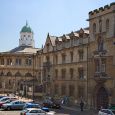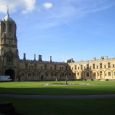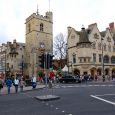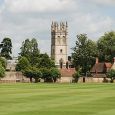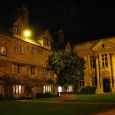Oxford
Advertisement
By Air
Although Oxford has a small airport a few kilometres from the city, it is primarily used for private aircraft and pilot training. Most international travellers will fly into Londons Heathrow or Gatwick Airport and then take one of the many transport options to Oxford. You can also rent a car at the airport and easily drive to Oxford.
By Rail
Express trains arrive from Paddington Station in London approximately every hour. The trip to Oxford takes about 1 hour, and although more expensive than coach travel, offers a wonderful way to get to the city. Trains also run regularly from Birmingham, Worcester, Hereford and Bath.
By Car
If you are driving from London, simply take the M40 and follow the signs. Unfortunately, traffic and parking are a massive headache in Oxford throughout the day, making the prospect of driving rather unappealing. There are four large park and ride areas on each side of the citys ring road, which may offer a better option. Buses run every 6-8 minutes from the parking lots into the city centre.
By Bus
National Express operates coach service from Londons Victoria Station to the Oxford bus station, departing London every 30 minutes throughout the day. The coach trip takes about 1 hour 45 minutes. Oxford Bus Company also runs express coaches from Londons Victoria Station, Baker Street and Marble Arch Underground stations.
Advertisement
Christ Church
Christ Church dispenses with the nomenclature of "college" and is known as "the House". It is one of the largest colleges and was founded in 1525 by Cardinal Wolsey and re-founded after Wolsey's fall by Henry VIII. Tom Tower, which was added by Wren in 1681-82, contains the huge bell weighing over 7 tons known as the Great Tom. Every evening at five minutes past nine it peals 101 times (once for each member of the original college). In earlier times the last peal of the bell was the signal for all college gates to be closed.
High Street
Merton Street leads into the splendid High Street, a busy street lined with magnificent buildings. It was described by Wordsworth in a sonnet, and the American writer Nathaniel Hawthorne (1804-64) called it "the finest street in England.
St Edmund's Hall
Queen's Lane leads to St Edmund's Hall, the first mention of which is in 1317. It was named after St Edmund of Abingdon, Archbishop of Canterbury (1170-1240), who studied here. This medieval students' hall of residence was for centuries used by The Queen's College, but since 1957 has existed as a separate college. Its tiny inner courtyard with a fountain dates from the 15th century, while the remaining buildings are of later date.
Tom Quad
The main quadrangle of Christ Church, Tom Quad, with its charming fountain is the largest courtyard in Oxford. The lower tower has a very fine staircase of 1630 with fan vaulting. It leads up to the Hall, a spacious and elegant dining-hall with a magnificent wooden ceiling, which was completed in 1529. It contains portraits of Henry VIII and distinguished members of the college, including the philosopher John Locke (1632-1704), who was sent down (expelled) for sedition, and William Penn (1644-1718), founder of Pennsylvania, who was also sent down as a Nonconformist, having defended the persecuted Quakers. There are also portraits of many prime ministers and of Lewis Carroll (1832-98), author of "Alice in Wonderland", who under his real name of Charles Lutwidge Dodgson was professor of mathematics in Oxford.
Ashmolean Museum
The Ashmolean Museum, founded in 1683, is the most important of the four university museums and is the oldest museum in the country. The neo-Classical building, which was designed by C. R. Rockerell, houses a magnificent collection of art and antiquities, including classical sculpture, Far Eastern art, Greek and Roman pottery and a valuable collection of jewelry.
Hobbies & Activities category: Major world-scale museum; Archeological exhibit, museum; Significant work of art; Coin collection; Ancient Egyptian art, artifacts; Paintings, art collections; Glass, porcelain, pottery exhibit; Gold, silver, metalworking exhibit; Musical instruments museum; Jewels, diamond cutting; Military attraction or museum; Oriental art; Prehistoric site or exhibit
Cornmarket Street
Cornmarket Street, commonly known as the "Corn", is Oxford's busiest shopping street. The former Crew Inn, where Shakespeare is said to have stayed on the journey between Stratford and London, now contains the offices of the Oxford Preservation Trust.
Information not available
January - February -> 6(°C) - Winter
July - August -> 20(°C) - Summer
Advertisement

